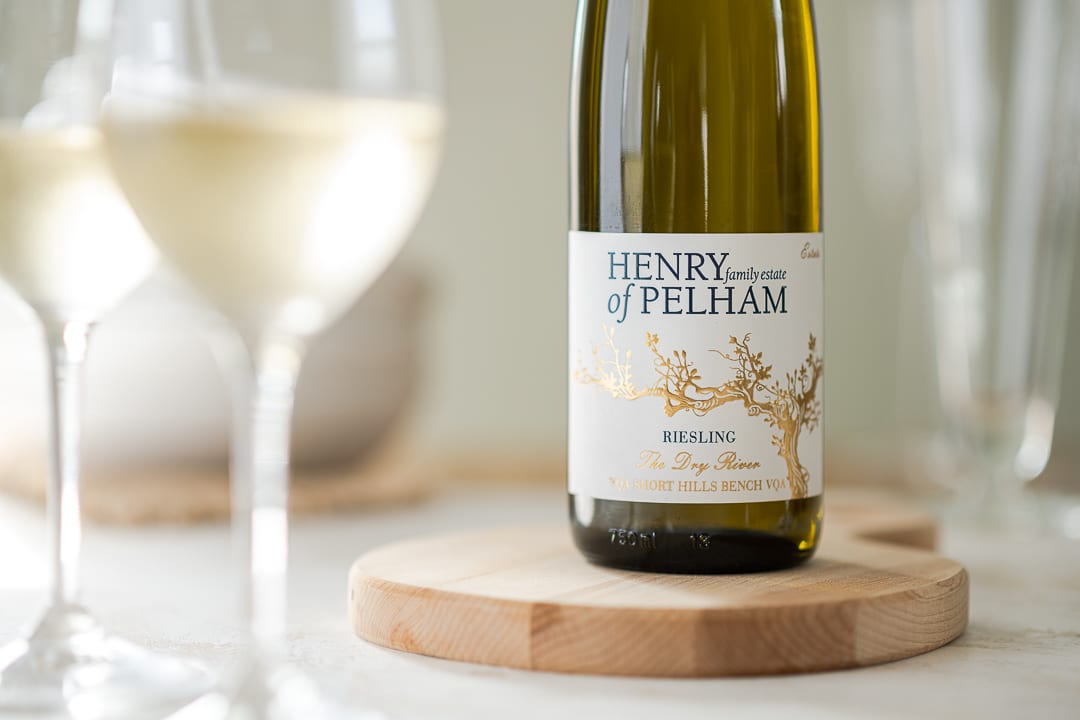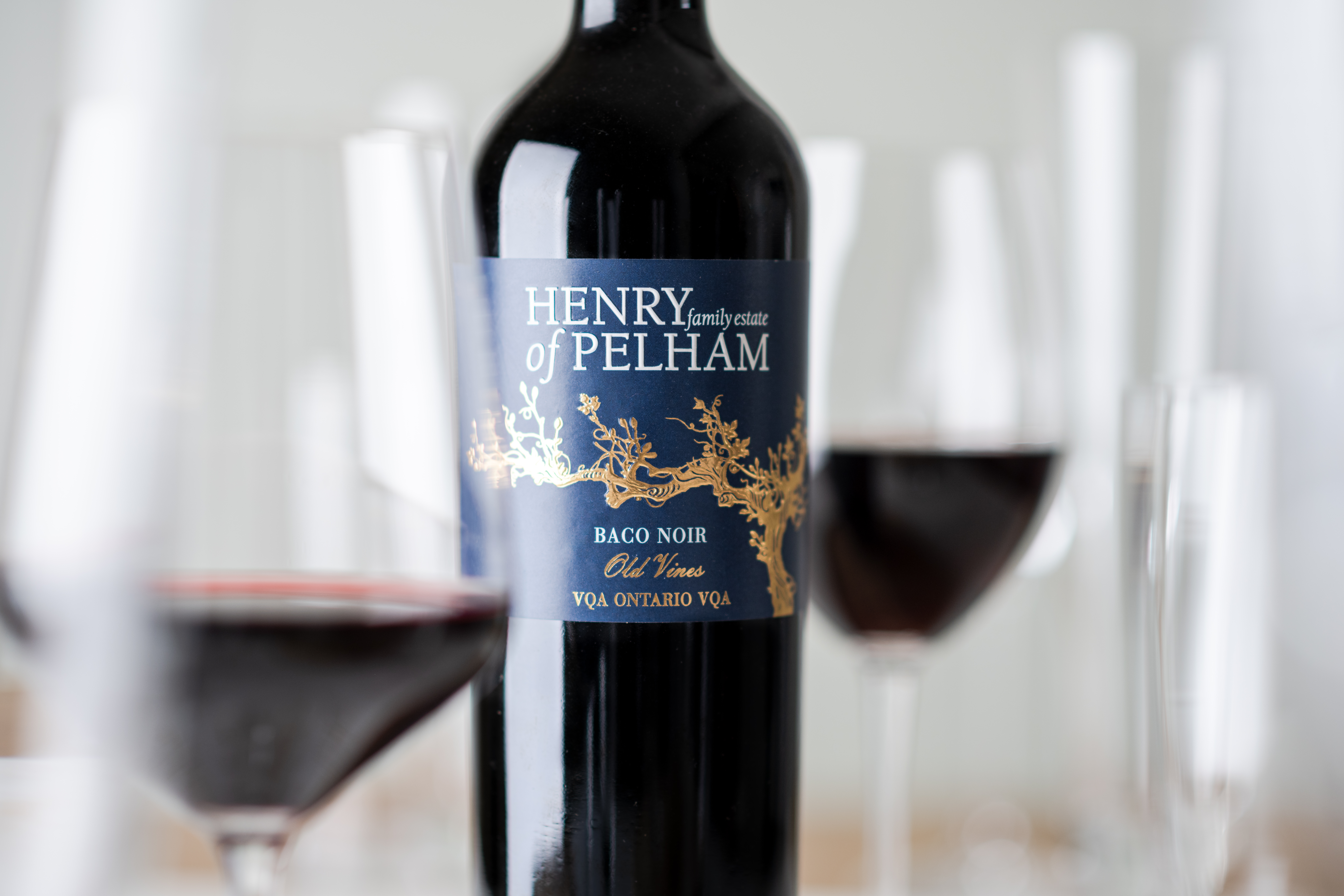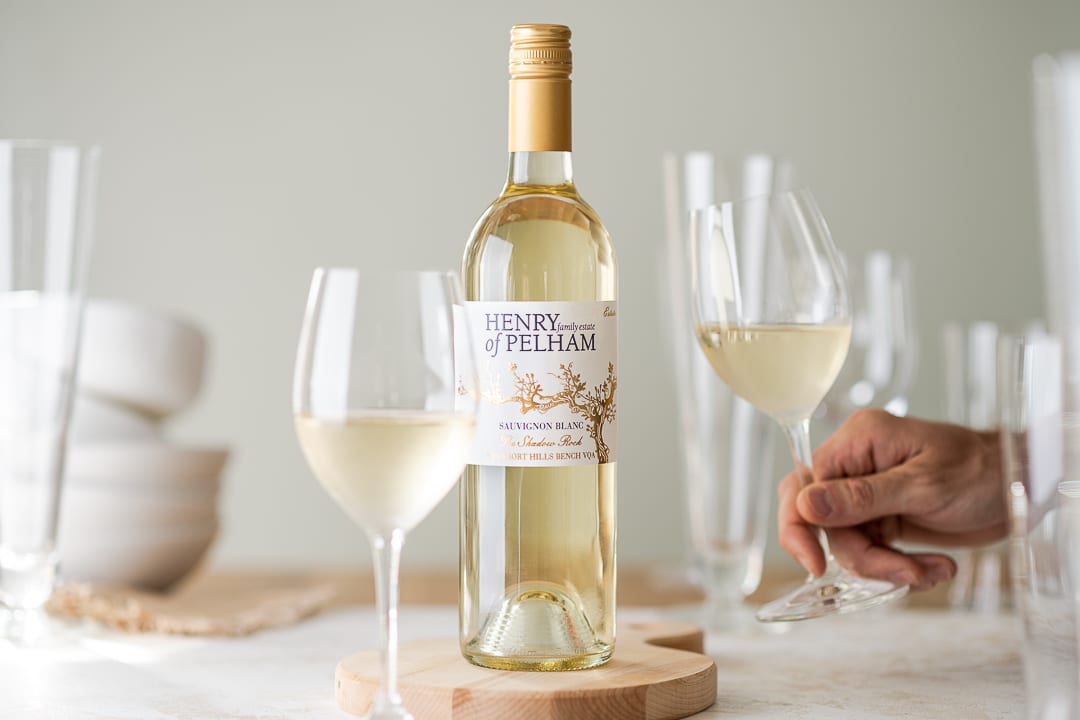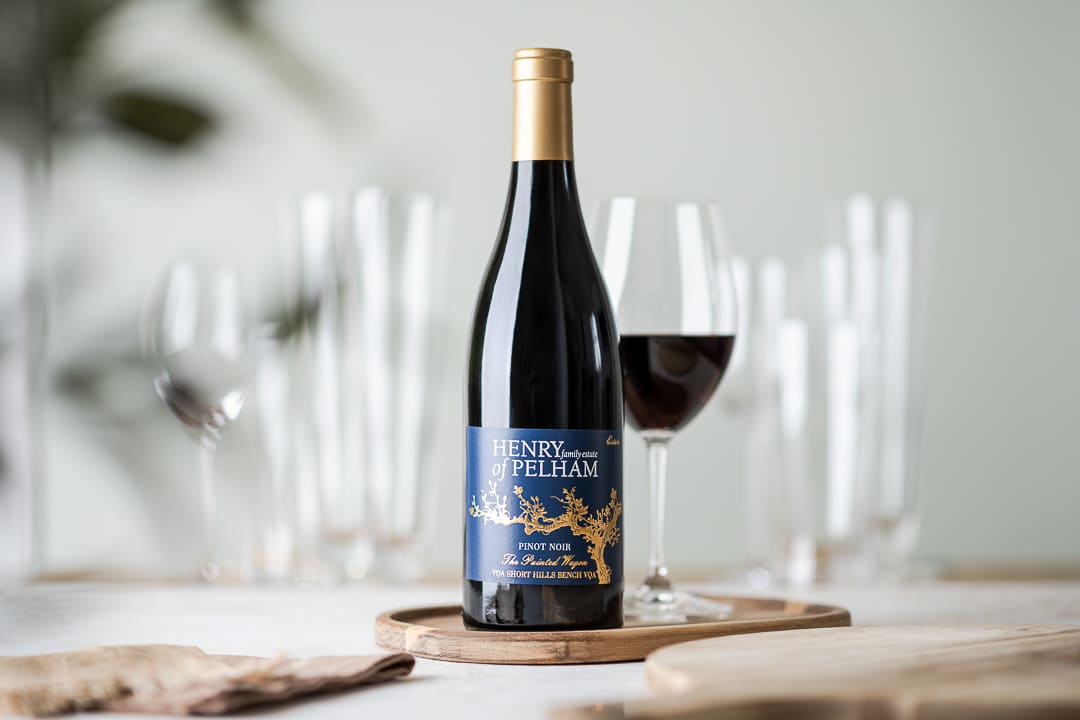IT'S ALL IN THE NAME
Each Henry of Pelham Estate wine tells the story of the place it was grown in our Short Hills Bench vineyards.
Our Estate vineyards are all grown within the small Short Hills Bench appellation and are our most representative expression of this place. With 90% of the region's south facing slopes, this is one of the warmest areas to grow grapes in Niagara. A diurnal shift of 13°C means warm days and cool nights, perfect for flavour development. Our vineyards are adjacent to the Short Hills Provincial Park, an ancient valley that was once a cataract formed simultaneously with Niagara Falls. The heavy clay soils, with their tossed-up limestone, naturally limit the yields per vine and make for wines of intensity and character. Through rigorous declassification they are limited in production.
The Dry River Riesling
Fruit from our Homestead Vineyard is the core of this wine. Shovel planted in 1984 with the Mosel clone Weiss 21b,the planting runs adjacent to the south slope along a tributary to Richardson's Creek. After the spring-melt this ‘tributary’ can run like a river through our farm before drying up for another year (or more). Stylistically this wine is a New World mash-up of a Mosel clone grown in a Burgundian-like climate on heavy clay, not slate. Together these elements make for a luscious but lemony-fresh, tropical cocktail of a wine.
Old Vines Baco Noir
From old vines shovel-planted as far back as 1984 by the Speck Brothers, Ontario's Baco Noir pioneers, come grapes that have maturity, great depth of flavor, structure, and finesse. These old vines produce less fruit resulting in rich wines with black currant and spice flavours. The vines are old because they are good, not good because they are old.
The Shadow Rock Sauvignon Blanc
In mid-July around 7pm when the sun is still high, its light is partially blocked by the rocky outcropping of the Niagara Escarpment. This casts a shadow across a pond and over our Sauvignon Blanc vineyard. In the shadow's darkness insects and frogs start their nighttime song creating a pensive moment filled with natural beauty. The intense warmth of day followed by the slightly shortened afternoon delays the fruit's development ever so slightly, contributing to a ripe aromatic wine that can only come from one place.
The School House Cabernet-Merlot
The dark red stone quarried from atop the Niagara Escarpment overlooking our vineyard became the foundation of our family's home and of the old schoolhouse on our property's northern boundary. Our cousins attended that school and together we shovel planted our first Cabernet and Merlot within site of this august building. As a second meaning, our parents Paul and Bobbi Speck ran a small school together in Toronto for more than 20 years which provided the springboard for what later became Henry of Pelham Family Estate Winery.
Three Hills Chardonnay
Our finest blocks of Chardonnay grow on three particular hills. The first is a shovel planted field-mix of clones from the north-eastern side of our Homestead Vineyard, the top of a saddle-back, planted in 1988. Its internal diversity brings complexity through its beautiful imperfection. Second, from the south-western corner of Homestead, is what we call ‘The Turtle’s Back’, a site which drains four ways and delivers lushness from the varied exposures that are enhanced by the precise flavours of clone 95's small clusters. These vines are trained low to the ground to capture ambient heat which warms the vines early in the day. Lastly, overlooking all is, is the third hill, near the middle of our Stagecoach Vineyard. This large single block of clone 302 rounds out the robust and harmonius character of the Three Hills Chardonnay.
The Painted Wagon Pinot Noir
When preparing to re-plant the vineyards in 1982, we cleared out an old barn of Henry’s and found the broken frame of a wagon and its wheels. As the property was once an inn on a toll-road (Stagecoach Road, later Pelham Road) and in its heyday the site of a horse track, it only seemed right to restore some piece of the vineyard’s antiquity. This painted wagon sits prominently in front of our tasting room today and is the moniker for this Pinot Noir (a grape that is often characterized as both horsey and, like racing, the wine of kings).







